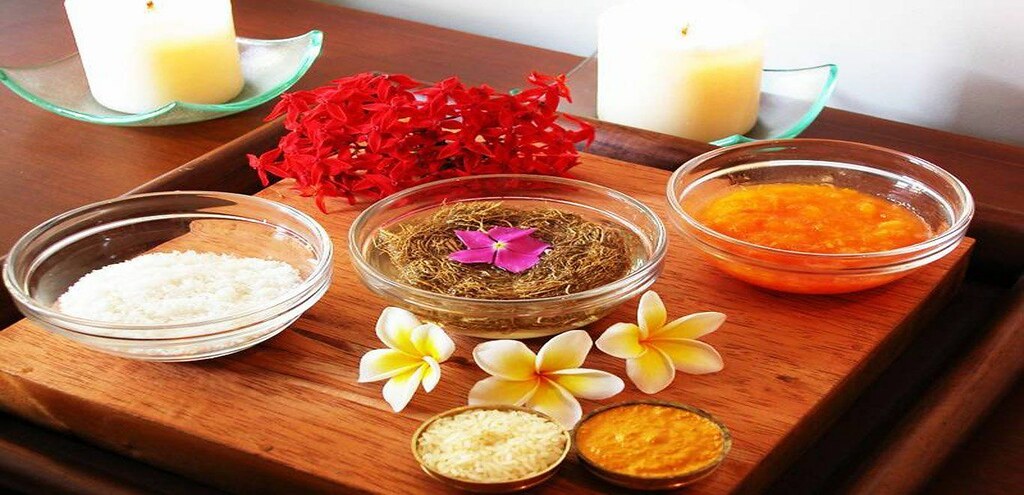
by Kimberly Rossi
Ayurveda, which translates to “knowledge of life,” dates back 5,000 years to the ancient Sanskrit texts, the Vedas. It’s a system of healing that examines physical constitution, mental disposition, and spiritual outlook in the context of the whole person.
The Ayurvedic definition of health is: “One who is established in Self, who has a balanced constitution, balanced digestive fire, properly formed tissues, proper elimination of wastes, well-functioning bodily processes, and whose mind, soul, and senses are full of bliss, is called a healthy person.” – Sushruta Samhita.
Ayurveda concentrates on the prevention and understanding of one’s own makeup and focuses on how the outer world and environment affects one’s daily life. The goal of Ayurveda is to teach people how to attain optimal health through a deeper understanding of themselves and their own particular nature in relationship to the world around them.
It is a system based on natural healing through strengthening the body, mind and spirit and allowing the body’s own natural healing mechanisms to work to their fullest potential.
According to Ayurveda, the universal life force manifests as three different energies, or doshas, known as vata, pitta, and kapha. We are all made up of a unique combination of these three energies. This unique combination, determined at the moment of conception, is our unique constitution, or prakruti.
The three doshas constantly fluctuate according to our environment, which includes our diet, the seasons, the climate, our age, and many more factors. The current state of these three doshas most commonly defines our imbalance, or vikruti. Since we all have a unique constitution and unique imbalances, each person’s path toward health will be unique. In addition, what will keep each of us healthy is also unique. Understanding our prakruti and vikruti offers each of us the potential to make correct choices.
In Ayurveda, the building blocks of life are comprised of five elements: earth, water, fire, air, and ether. The three doshas—Vata, Pitta, and Kapha—are derived from the five elements. The doshas, known as mind-body types, express particular patterns of energy—each a blend of physical, emotional, and mental characteristics. Different foods, seasons, exercise, and even yoga poses cause specific doshas to either increase or decrease.
Here is a quick overview of those three Ayurveda Constitutions (Prakruti). It is the unique combination of these three energies (doshas) that defines our own unique constitutions.
Vata Constitution
Those who are born with more of the space and air element have a vata constitution. Generally, a vata person will be very thin, more talkative, and often restless. They typically have a lower body weight, dry skin, brittle nails, thin hair, and small, slightly sunken eyes. While walking, their joints may make sounds. In terms of climate, they tend to prefer warm or hot weather, while they may have trouble tolerating the cold. They have a hard time gaining weight, so they tend to be thin.
Pitta Constitution
Pitta people are those who are born with hotter constitutions, containing more of the fire element. A pitta person is generally active, good looking, a perfectionist, dynamic, intelligent and also short-tempered. They may have leadership qualities, a moderate build, a smart personality, a sharp nose, and their eyes will also be sharp, sometimes offset with a slight pinkish tint. Due to the unfortunate ease with which a pitta person gets imbalanced, hair loss and early greying are common. They are generally slightly warm to the touch with rosy lips and pink nails with a slight curve.
Kapha Constitution
Kapha indicates a preponderance of the water and earth element. People with this kappa constitution are generally cool, calm, cheerful, stocky (if not overweight). If assigned a task, they never complete the task on time. Actually, Ayurveda says that because a kapha person is the least bothered, happiest type of person on the whole planet, the best constitution is kapha. They’re cheerful all the time! Other qualities include a thick build, thick, dark hair, big eyes with very white sclera (whites), and prominent, shiny, white teeth. The skin may also be thick, moist, and a little cool to the touch. As a personality type, while they tend to accumulate stuff, but they also have a sharing streak that moves them to service for society.
Kimberly Rossi is the Director of Spa & Business Development at The Art Of Living Retreat Center & Shankara Ayurveda Spa
The post Understanding Ayurveda appeared first on Wellness Tourism Association.

